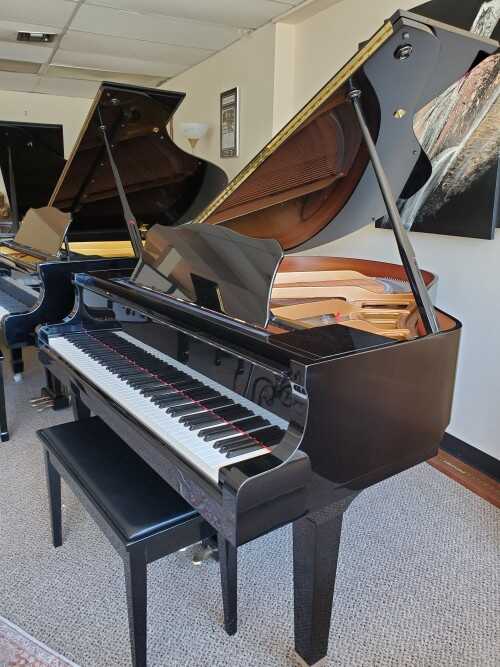
During the early 1920s, Baldwin had created large special reserves for unforeseen needs. Baldwin’s survival was due to its prudent management. Unfortunately, due to new forms of entertainment including the radio, movies, phonographs and automobiles, player sales fell 86 percent by 1929.Ĭompounding the loss, the Great Depression began in 1929. This market segement grew quickly, peaking at 56 percent of the industry’s total piano production in 1923. In addition to traditional pianos, Baldwin manufactured a variety of player piano models, available in both grand and upright styles. Early Baldwin Artists included concert pianists José Iturbi, Wilhelm Bachaus and Walter Gieseking as well as composers Bela Bartok, Ottorino Respighi and Igor Stravinsky. Louis and San Francisco.īaldwin’s artistic coming-of-age was reflected in the many performers who chose the Baldwin grand for concerts and radio broadcasts.


Three years later, the company boasted retail divisions in Cincinnati, Chicago, Dallas, Denver, Indianapolis, Louisville, New York, St. Louis (1904) and at London’s Anglo-American Exposition in 1914.īy 1913, Baldwin enjoyed a robust international business, exporting pianos to 32 countries around the globe. A Baldwin concert grand was honored with the Grand Prix Award at the 1900 International Exhibition in Paris, the first American-made piano to earn the award. In 1895, the company introduced its first grand piano, a 5’4″ model.īaldwin established a worldwide reputation by winning top awards at key expositions. The first Baldwin piano, an upright model, was available one year later. With an eye on increased growth opportunities, Baldwin decided to manufacture “the best piano that could be built” in 1890. During the next quarter century, Baldwin became one of the largest piano retailers in the Midwestern United States. More than one note of a particular nomenclature can be simultaneouly gated from the divider chain of a particular programmable generator.The Baldwin Story…In 1862, reed organ and violin teacher Dwight Hamilton Baldwin opened the doors to his music store in Cincinnati, Ohio. The information ascertained by the microprocessor from the keyboard(s) (and the tab switches) is used to control the selection of gates which control the passage of tone signals from appropriate dividers in the chains of dividers to an audio output system. Each of the programmable generators is connected to a chain of dividers and gates which are also under the control of the microprocessor. A microprocessor controls the assignment of particular notes to each of the programmable generators, in accordance with the played keys of the keyboard(s) (and the tab switches, in the event that a partial footage is selected).
#VALUE OF 2001 BALDWIN DIGITAL PIANO GENERATOR#
When the lowest few strings of the bass section appear to have subjectively less apparent fullness of tone, the striking distance of the lowest few strings can be shortened string-by-string toward the low end of the bass section by amounts which will modify their subjective d/L - dependent pitch in 100-cent increments.Ībstract: A tone generator system for an electronic organ, which incorporates N programmable generators (where N is less than 12, and typically 7) which forms a system having the ability to sound notes of N different nomenclature tones at one time. Alternatively, the hammers of those bass section strings having an optimum value of d/L of 1/7 or less can be conventionally located at the same striking distance (d) determined from a preselected d/L value falling within the range of 1/7 to 1/9, or can be incrementally varied. The hammers of all of the bass section strings can be so located.

At least those strings in the bass section having an optimum striking distance (d) to speaking length (L) ratio (d/L) of a value greater than 1/7 have their hammers located at a striking distance (d) along their lengths as determined by their optimum d/L value. Abstract: An augmented bass hammer striking distance is provided in both upright and grand pianos.


 0 kommentar(er)
0 kommentar(er)
